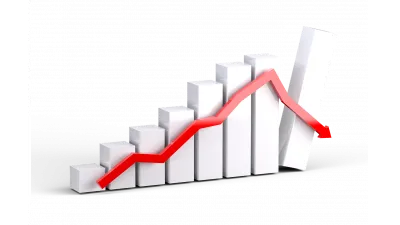The trend of high integration and high power superposition, automotive electronics market promising
In 2022, despite the impact of many adverse factors, such as frequent outbreaks of COVID-19, structural shortage of chips, and high prices of raw materials for power batteries, China's auto market achieved positive growth in spite of the adverse situation, effectively driven by a series of policies to stabilize growth and promote consumption, such as the halved purchase tax.

The figures from the Association show that in 2022, China's automobile production and sales completed 27.021 million units and 26.864 million units, respectively, with year-on-year growth of 3.4% and 2.1%. Compared with the previous year, the growth rate of output was flat, while the growth rate of sales decreased by 1.7 percentage points. China's total automobile production and sales have been the world's largest for 14 years in a row.
Under the dual role of policies and the market, China's new energy vehicles continued explosive growth in 2022, with the production and sales of 7.058 million and 6.887 million, respectively, up 96.9% and 93.4% year on year. The market share of new energy vehicles reached 25.6 percent, up from 12.1 percentage points in 2021.
China's new energy vehicles have developed rapidly in the past two years, ranking first in the world for eight consecutive years.

On February 7, an official from the Ministry of Industry and Information Technology commented on the positive results achieved in the development of China's new energy vehicle industry in recent years, saying that China has fulfilled the 2025 development target set in the New Energy Vehicle Industry Development Plan (2021-2035) ahead of schedule.
The person in charge pointed out that, on the whole, China has mastered key technologies such as batteries, motors and electric controls, formed a complete industrial system covering basic materials, components and manufacturing equipment, and has the foundation and conditions to support the comprehensive market expansion of products. However, it still faces prominent problems such as the need to improve the convenience of charging and replacing electricity and the lack of industrial integration and development. At the same time, the strategy of carbon peaking and carbon neutrality also puts forward higher requirements for the construction of green and low-carbon transport system.
From Q4 China-Vietnam smartphone shipment changes, look at 2023 global market trends
In 2022, the global smartphone market continued to decline due to COVID-19, Russia-Ukraine conflict and other factors, which was called "the worst year for the mobile phone market in the past dec…Taiwan's technology industry saw its slowest revenue drop in a decade in March
Taiwan's leading technology companies saw their revenues fall the most in at least a decade in March, according to the Nikkei Asian Review, signaling a looming slump in demand for chips and other …
- Top News
- HRE CSA Series Commercial Grade MLCC Capacitor Selection Guide
- HRE CIA Series Industrial Grade MLCC Capacitor Selection Guide
- HRE CAA/CAI Series Automotive Grade MLCC Capacitor Selection Guide
- FTR20D681K Varistor Applications and Technical Advantages: Providing Comprehensive Protection for Your Circuits
- Samsung Electronics showcases its new automotive technology strategy at Foundry Forum EU 2023

